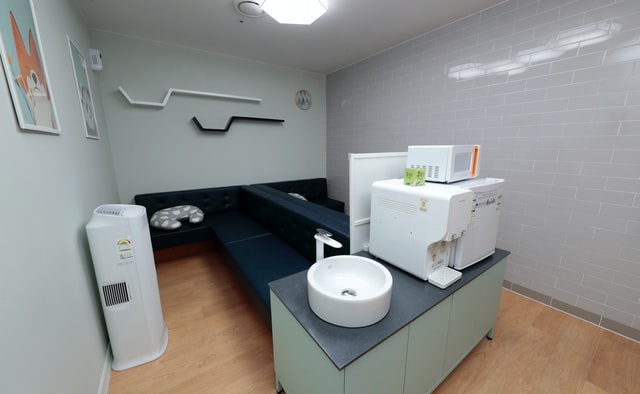There are several things to consider when it comes to indoor air quality. First, many people are unaware of the pollution problems they may be facing in their homes. Whether the pollution comes from indoor air or outdoor air, a slight change in these factors may disrupt a person’s equilibrium. To help address these problems, a person can use Ventilation, Humidifiers, or Dehumidifiers. Or you can also use different products, like indoor air quality products Faulkner county for example.
Source control
The best approach for public health protection is source control. This involves eliminating or reducing pollution by judicious product selection, modification, and use restrictions. Source control can reduce harmful emissions, and it is also much less costly than ventilation. To get started, identify and assess sources of indoor pollution. Identifying important sources requires research on the emission rates and expected public health consequences of particular pollutants. Then, prioritize those sources for source control.
While most indoor air pollution originates from sources inside the home, certain factors may contribute to indoor pollution. For example, excessive moisture can lead to bacterial and mold growth, and mechanical/structural systems fail. Source control is the most effective strategy for improving indoor air quality in the home because it reduces individual sources of pollution. This approach can also help increase occupant health and decrease energy costs. The benefits of source control are immense.
Ventilation
While most allergens are odorless, people will experience allergic reactions when they breathe them in. In wintertime, indoor air quality is often worse than outdoor air, and the symptoms of an allergy or asthma attack may make you want to go outside and get some fresh air. If you notice an increase in the number of allergies and asthma attacks in your home, it is a sign that your indoor air quality needs some attention.
The best way to improve indoor air quality is to minimize individual sources of pollutants by reducing emissions. For example, you should seal up asbestos sources and adjust gas stoves to reduce emissions. Despite the many benefits of ventilation, you should never use it to substitute for proper work practices. Instead, ventilation should complement other measures, like reducing recirculated air and changing work practices.
Humidifiers
A good humidifier can significantly improve indoor air quality, mainly when used in arid conditions. Most humidifiers produce a fine mist in the air through ultrasonic vibration, which causes water vapor to be released into the air. The higher-end models don’t even use fans, making them very quiet. However, they can sometimes create white dust due to mineral deposits, which you can eliminate by using distilled water.
High humidity increases the chances of mold growth. Depending on the season, the moisture inside your house can vary widely. In winter, you should lower the moisture in your home while raising the humidity level to 50 percent in summer. Generally, it’s better to have a slightly higher humidity level than a low one, but this may not be enough to make a difference. On the other hand, Humidifiers can help you achieve this comfort level without overdoing the humidity.
Dehumidifiers
If you have allergies, you should use dehumidifiers in certain homerooms. Bathrooms, for example, can be very humid and have very little or no ventilation. To determine the extent of humidity in your bathroom, check for water stains or condensation on the windows. Also, look for black spots, as these are mold spores. These can be dangerous for your health and may contribute to respiratory conditions.
Dehumidifiers can help you control pests, too. Spiders and cockroaches can be an unpleasant presence indoors. Molds and bacteria thrive in high humidity, which increases the chances of infestation. If you have a dehumidifier in your home, remember to change its filter often to avoid creating a breeding ground for them. If you can’t do it yourself, you can contact a company that offers an entire air purification system.
Cleaning products
Consumers spend most of their time indoors, and various pollutants often contaminate the air in these places. People who live in areas with higher pollution levels are more vulnerable to its effects. Also, Americans spend up to 90 percent of their time indoors. To improve indoor air quality, consumers should choose cleaning products that have lower levels of volatile organic compounds (VOCs).
While it might seem like it’s not necessary to switch to a new product to clean a house, conventional cleaning supplies often contain VOCs that are harmful to our health. To avoid the risks associated with cleaning products with VOCs, consider only using a few safe and natural alternatives. While natural cleaning products can be effective, they can exacerbate indoor air quality by introducing more toxins. For the best results, switch to safe formulated cleaning products.
Heating systems
Homeowners looking for the best way to improve the air quality of their homes can take several steps to improve their system. One of the easiest ways to improve indoor air quality is to increase the amount of outdoor air that enters the home. While most home heating and cooling systems don’t mechanically introduce fresh air into the house, it is possible to increase the amount of outdoor ventilation by opening windows and running window air conditioners with the vent control open. Homeowners can also install local exhaust fans in the kitchen and bathroom to remove contaminants directly from the room.
In most cases, the pollution that enters the home results from everyday living. Smoke, pet dander, and harmful chemicals are significant sources of indoor air pollution. Moreover, the air in newer homes is airtight than in old houses, making them more susceptible to indoor pollutants. Lack of ventilation in homes also contributes to the problem of poor indoor air quality.

